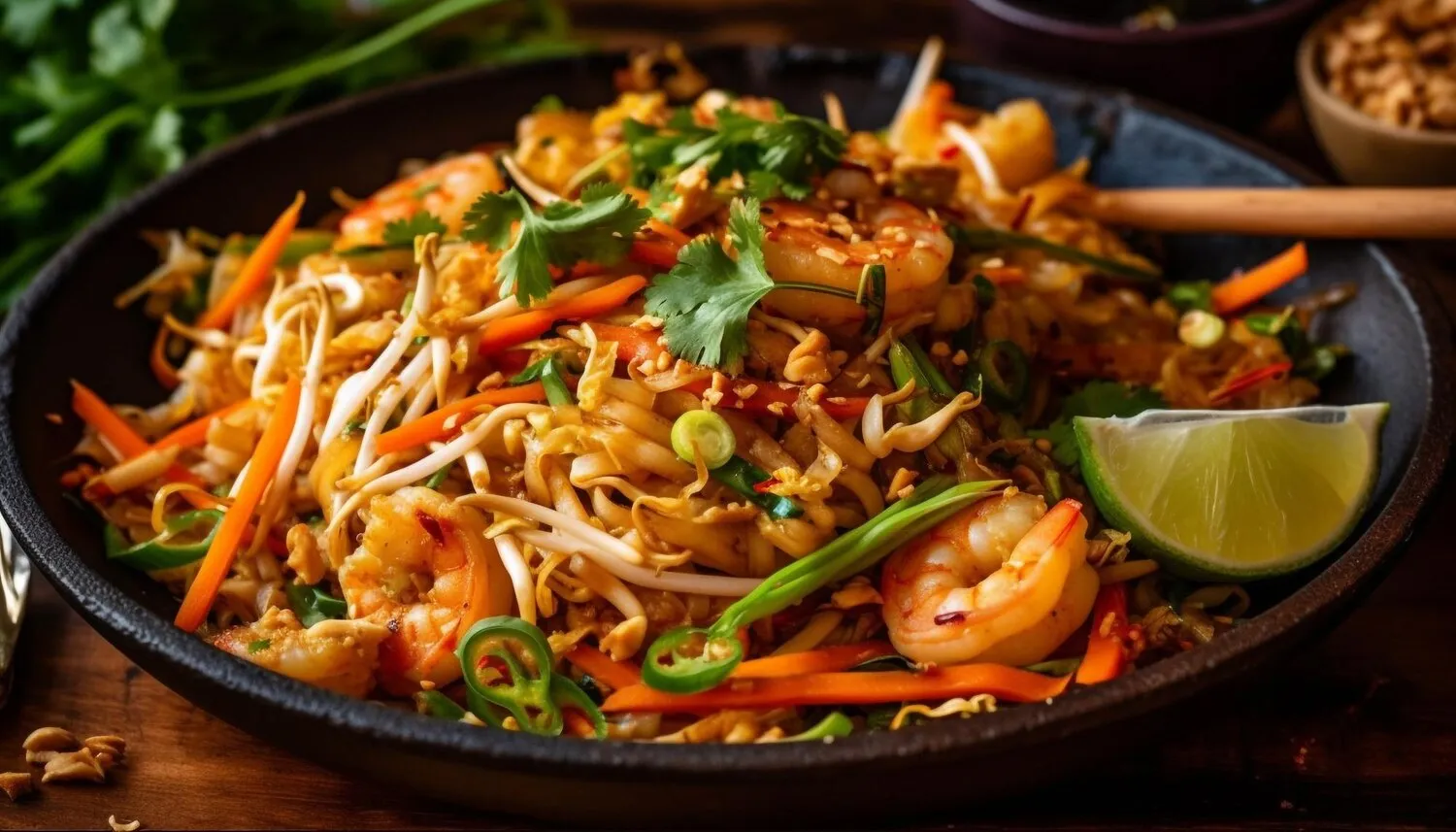
Hokkien Mee
Thick yellow noodles braised in a rich prawn broth with prawns, pork, and vegetables. A classic Malaysian noodle dish known for its umami flavor.
Nutrition Facts
* The % Daily Value (DV) tells you how much a nutrient in a serving of food contributes to a daily diet. 2,000 calories a day is used for general nutrition advice.
Hokkien Mee's origins can be traced to early Chinese immigrants, particularly from the Hokkien province of China, who settled in Malaysia and Singapore. Over time, these immigrants adapted their traditional noodle dishes using locally available ingredients and cooking techniques, resulting in the various versions of Hokkien Mee found today. The dish reflects the fusion of Chinese culinary traditions with Southeast Asian flavors.
Hokkien Mee is a beloved street food staple in Malaysia, often enjoyed as a late-night supper or a satisfying meal at hawker centers. It is more than just food; it is a symbol of local culinary heritage and a gathering point for communities.
Hawker Culture
Hokkien Mee is deeply ingrained in the Malaysian hawker culture, where it is prepared and served by skilled cooks who often pass down their recipes through generations. Eating at hawker centers is a social experience, and Hokkien Mee is a common choice for locals and tourists alike.
Regional Variations
Different regions in Malaysia have their own unique versions of Hokkien Mee. For example, Penang Hokkien Mee (also known as Prawn Mee) features a spicier and more intensely flavored prawn broth, while Kuala Lumpur Hokkien Mee is typically darker and richer due to the use of dark soy sauce.
Celebratory Meal
Hokkien Mee can be part of family celebrations or gatherings. The dish is hearty and satisfying, making it a great meal for sharing.
Hokkien Mee is renowned for its intense umami flavor, derived from a rich prawn broth, and a balance of savory, slightly sweet, and smoky notes.
The primary flavor driver is the prawn broth, typically made by simmering prawn heads and shells to extract maximum flavor. Pork lard (or vegetable oil for some variations) contributes richness and depth. Soy sauce (light and dark) provides saltiness and color. Garlic and sometimes chili add aromatic and spicy elements. The noodles themselves absorb the broth, delivering a burst of flavor with each bite. The addition of ingredients like prawns, pork, and vegetables further enhance the overall taste profile.
Broth Preparation
The quality of the prawn broth is crucial. Use fresh prawn heads and shells, and simmer them slowly for an extended period to extract maximum flavor. Some cooks add pork bones for extra richness.
Wok Hei (Breath of the Wok)
Wok hei, the smoky flavor imparted by a hot wok, is essential for authentic Hokkien Mee. Use a well-seasoned wok and cook the noodles over high heat, tossing them frequently to achieve a slightly charred and smoky flavor.
Noodle Selection
Using the right type of noodles is important. A combination of thick yellow noodles and rice vermicelli (bee hoon) is commonly used to provide a textural contrast.
Pork Lard Magic
The best Hokkien Mee uses crispy pork lard. Rendering your own lard and using the rendered oil adds an irreplaceable depth of flavor. Vegetarians can substitute with a good quality vegetable oil but the result will be slightly different.
Explore additional Noodles dishes and restaurants
Explore NoodlesDiscover top dining spots and culinary experiences in Sydney.
Explore SydneyLearn more about the food culture, restaurant scene, and culinary heritage of Australia.
Explore Australia